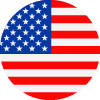An eye opening interview with Hubble's trusted medical advisor Dr Brian Levy
We took time to speak with Hubble's medical advisor Dr. Brian Levy, the former Chief Medical Officer at Bausch and Lomb and Aerie Pharmaceuticals, who has over 40 years of experience advising and working alongside various leading vision companies.
Hubble was founded to make daily disposable contact lenses — the safest form of contact lens wear — more affordable and convenient. The company's founders knew that to do so, they would need guidance from some of the vision industry's most trusted and experienced medical experts.
Brian Levy's years of experience and first-hand knowledge of the vision industry made him Hubble's ideal medical advisor. Brian is the former Chief Medical Officer at Bausch and Lomb and Aerie Pharmaceuticals and has over 40 years of experience working with and advising many leading vision companies.
We took time to speak with Brian Levy to learn more about his experience, understand what attracted Brian to Hubble, and ask him a few million-dollar questions.
Can you tell us about your background, Brian?
I have been in the vision space since 1976 when I graduated from UC Berkeley with a Doctor of Optometry degree. I then went on to earn a Master of Science degree from the University of Waterloo in Canada. My dissertation was in comparative anatomy and physiology of the eye, researching comparisons and differences between animal and human visual systems.
During this time, I learned the importance of and adopted the scientific method of both basic and clinical research. This finding led me to take National Eye Institute-sponsored courses in Epidemiology and Biostatistics in clinical research, which set the course for my future career.
I spent ten years in private practice, on my own for the most part, and then transitioned to a group practice in the Ophthalmology Department as Head of the Contact Lens Service at California Pacific Medical Center in San Francisco. I spent five years there seeing patients, teaching residents, and working closely with a corneal specialist.
Through my private practice, using the tools I had learned through my experience, I accepted consulting roles with the major ophthalmic companies to do clinical research for the development of new products. This provided insightful information not only to the companies I consulted for but also for myself in understanding the product development process for both medical devices and pharmaceutical products for use in the eye.
Along the way, I became somewhat prolific in writing up the research I carried out submitting the papers to peer-reviewed medical journals.
After my time at California Pacific Medical Center, Bausch & Lomb recruited me to manage their clinical development programs for devices and pharmaceutical products. Of course, this meant I would have to give up my practice and move across the country. I did, and this was the beginning of a whole new career.
During my 15 years at Bausch and Lomb, I was Vice President of Research and Development, Clinical Development and Medical Affairs, and eventually Chief Medical Officer. During this period, I oversaw the clinical development of three pharmaceutical products and multiple medical device products through the FDA and other regulatory agency approvals worldwide.
After Bausch & Lomb decided to take the company private, I moved to New York City and joined Aerie Pharmaceuticals as their Chief Medical Officer. I was responsible for the clinical development of two new pharmaceutical eyedrops for lowering intraocular pressure in patients with glaucoma. Both are now approved and commercialized.
Following Aerie, I was offered and accepted the CEO position at InflammX Therapeutics. At InflammX, we target a recently discovered inflammation pathway called the inflammasome. Once dysregulated, the inflammasome becomes autoinflammatory (attacking one's own tissues and organs), creating significant damage to the body.
We are clinically developing an orally administered drug to treat macular degeneration and diabetic eye disease by restoring physiological regulation of the inflammasome. The current first-line treatment for these diseases is an injection into the back of the eye, which needs to be repeated monthly to maintain vision.
You've worked with Hubble since the company's early days. What about Hubble interested and attracted you?
I was introduced to Hubble by one of their original investors, who knew my background and that I had relevant experience. I have always been a big supporter of daily disposable contact lenses, which dates back to my time at Bausch and Lomb.
At B&L, one of my first projects — and my first clinical trial — was a silicone hydrogel (SiHy) contact lens. B&L was the leading company in SiHy contact lens development and approval for commercialization.
The industry sought to adopt SiHy materials to increase oxygen permeability, which they were convinced would decrease the risk of serious corneal infections, particularly if patients wore lenses overnight. (Overnight wear significantly increases the risk of serious corneal infection.) However, the thinking was also that more oxygen would reduce the incidence of adverse events for all types of lens-wearing schedules, even if the lenses were not worn overnight.
After SiHy lenses came onto the market, researchers in the US and UK repeated the epidemiological studies they had carried out previously (with non SiHy lenses) to demonstrate that overnight wear was the major risk factor for serious corneal infections. This time around, they carried out the studies with SiHy overnight wear.
Unfortunately, the data showed that the rate of infection didn't change at all with the SiHy material, which demonstrated that oxygen permeability was not the cause of the problem. The key to reducing serious infections is not wearing lenses overnight—each night lenses are worn leads to higher risk.
Another risk for infection comes from the need to clean and disinfect contact lenses worn daily with cleaning and soaking in a disinfecting solution overnight. The infection rate with this type of wear is 4x lower than if contact lenses are worn overnight. However, if wearers do not follow the instructions provided by the companies developing the lenses and cleaning solutions, serious infections can and have occurred.
“The data is pretty clear in the scientific literature that disposing of contact lenses on a daily basis is the safest form of contact lens wear, irrespective of the type of material the lens is made from.”
The use of daily disposable lenses averts the need for both sleeping with lenses in the eye and using contact solutions to clean and disinfect the lenses every day according to strict and important directions.
In the US, in particular, there is a long-held perception that daily disposable contact lenses will cost more. This perception was the case initially, and looking at the market share of this modality of lens wear, it still appears to be an issue for patients.
“When I heard that Hubble would be focusing on more affordable daily disposable contact lenses, conveniently delivered on a subscription basis, to those who chose this delivery route, I was pretty excited because I believe wearing daily disposable contacts is the best choice for patients.”
You have extensive scientific and technical expertise and deep clinical insight in the field of eye care and eye health. How would you advise someone choosing between daily disposable contact lenses and reusable (bi-weekly or monthly) contact lenses?
In fact, both of my contact lens-wearing kids have used daily disposable contact lenses since the lenses first entered the US market.
I do need to mention that we are talking about relative rates of adverse events — in other words, comparing rates overall between wearing schedules. As CMO at B&L evaluation of all adverse events was a significant part of my responsibilities. Based on the data evaluated relating to adverse findings of contact lens wear, I can say with confidence that regardless of material or modality (other than overnight wear), contact lens wear is one of the safest modalities for vision correction. Furthermore, in terms of relative risk, daily disposability appears to confer the lowest risk of adverse responses overall.
Why do you think daily disposable contact lenses are less prevalent in the US than in other countries?
This is a good question, and the US is indeed playing catch-up.
J&J Vistakon was the first company to commercialize daily disposable contact lenses successfully. Other US companies followed, but those companies did not aggressively shift to acquiring, manufacturing, and selling daily disposable contact lenses.
There appear to be multiple factors for this, including the significant cost of manufacturing the volume of lenses needed to service a one-day disposable market, the education necessary for contact lens wearers that this would be affordable, and the inherent internal decision-making if the company had a significant business in cleaning/disinfecting solutions.
However, all-in-all, the US is catching up, which I think is a good thing.
What's the difference between contact lenses that, like Hubble, are made out of a hydrogel material and those made out of silicone hydrogel?
As I previously mentioned, I have a lot of experience with silicone hydrogel lenses and was the first to get them into clinical trials with the FDA. We got SiHy lenses approved for continuous 30-day wear by the FDA.
I learned a lot about SiHy lenses during this time, from the required custom manufacturing and the necessary surface treatments to ensure wetting and comfort when worn. The entire reason we conducted these clinical trials with SiHy lenses was in the hopes of decreasing the rate of infection with overnight wear of lenses by increasing oxygen permeability. As I previously mentioned, the increased oxygen permeability turned out not to lower the risk of infection.
Companies had made a massive shift to SiHy manufacturing despite the fact that increased oxygen permeability did not reduce the serious adverse responses as expected.
“The data from clinical and epidemiological studies strongly suggest that the material of the lens matters less than whether the lens is a daily disposable contact lens or a reusable contact lens. The studies continue to reflect that the safest way to wear contact lenses, is to wear those that are disposed of on a daily basis.”
Some optometrists have dinged Hubble for the oxygen permeability of its lenses. Do you think that's a valid criticism?
This question ties in nicely with the previous one, and the answer really remains the same.
I should also note that Hubble's contact lenses have acceptable oxygen permeability for a daily disposable contact lens. The material Hubble uses — methafilcon A — has been cleared by the FDA and continues to be widely used in the industry. Based on Hubble's experience and safety database, Hubble contact lenses demonstrate the lenses to be performing as expected as a 1-day disposable contact lens.
In your view, how important is it that Hubble offers wearers a subscription? Why?
Furthermore, it incentivizes patients to adhere to the one-day disposable modality without adding risk by over-wearing them.
Customers like the convenience of it, and it differentiates Hubble.
What do you feel is an essential piece of information you can offer someone about their eye health to ensure healthier vision?
My response to this is to get an eye exam annually.
Hubble's mission:
At Hubble, we believe in helping the world see clearly through convenience and affordability. Hubble's vision has remained the same—providing safer eyewear at an affordable price.
You should never have to choose between your vision and your wallet. With this at the forefront of the Hubble vision, we focus on delivering a great eyewear experience that is cost-friendly, all while seeking the counsel of experienced thought leaders in the vision space, such as those from Dr. Brian Levy.


